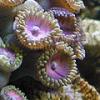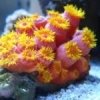-
Topics
-
Latest Update
-
2
Wts Redsea RL90 with stand, Reefwave 45 and Hanna LR Phosphate checker
Left with RL90 with stand $270 -
0
WTS Tanks
Two tanks to clear: 1. Nano tank, 27*20*20 (small one). Tank only. Good condition, good quality. 2. Standard tank, 60*32*37, good condition, good quality Both well taken care for. Used for marine fish. There's a tiny tank, take it too. Take all for $60 only. Self collect, Beo crescent. PM if keen -
0
WTT Red saddleback clownfish breeding pair
hi, anyone wanna trade fish or coral with my red saddleback clownfish adult breeding pair for trade with fish or coral at clementi pm if interested 20250108_195853.mp4 -
0
-
3
-







Recommended Posts
Join the conversation
You can post now and register later. If you have an account, sign in now to post with your account.